Osteochondrosis is a pathology known 40% of the population under 35-40 years and nearly 90% in age. Even in adolescents sometimes discover signs of osteochondrose - reduction of discs, pain, discomfort in spine. If you start the treatment of diseases in the first phase, before the destruction of the disk, the chance to stop progress is very high.
What is osteochondrosis?

With the osteochondrose of the spine, one or more intervertebral disks occurs. The disease may occur in any department:
- Thoral;
- Shein;
- Lumbar (lumbosacl).
In severe cases, vertebrate degeneration on osteochondrose background is observed throughout the pillar, which causes human disability. So what is that disease - osteochondrosis? Pathology is associated with a gradual, stable and progressive nutritional breach of the hijalin cartilage located on intervebrebral disks, as a result they change their position, shape, crack. The person is experiencing heavy pain syndrome, the functions of the entire muscular and bone system are reduced.
What is osteochondrose regarding your consequences? If you do not spend treatment, the vertebrae will be compressed, cracks between them will decrease, and the discs will seem to decompose. This will lead to damage to nervous roots, damage to the spinal cord and damaged work of the internal organs. Bone osteophytes appear along the edges of the disks - growth that cause even more pain. The consequences of this spinal disease are very serious.
Main causes of osteochondrose
Scientists came to the conclusions, studying osteochondrose that this disease is a consequence of a direct person, so most people are susceptible. Daily large loads on spine, age - cut worsening of vascular functions, inferiority and body aging are the main causes of osteochondrose. The following factors separate the situation:
- Frequent improper body position (for example, curved seating at the table, carrying a handbag);
- Sleep on soft mattresses, pillows;
- Flat feet, leg deformation;
- Metabolic diseases;
- Excess weight creates improved loads on the vertebral column;
- Hypodynamia;
- Holding disorders;
- Multiple pregnancies;
- Experience to smoke;
- Vertical instability.
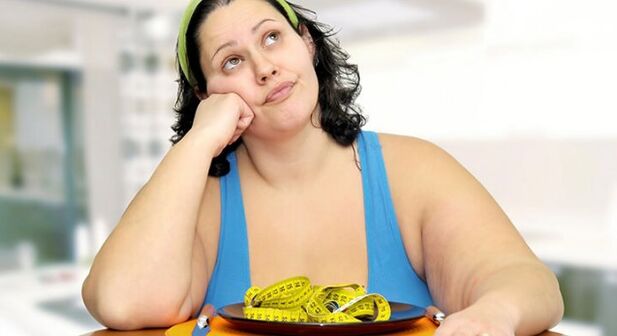
Injuries, severe physical activities greatly deteriorate the development of osteochondrose spine. Therefore, athletes, employees in physical work, osteochondrose of the lower back - a very "popular" problem. Heredity also plays an important role in the pathogenesis of syndrome - if the parents in the young age had serious back problems, the child has a high risk of spinal disease.
Psychosomatics osteochondrose
Psychosomatic causes of pathology are the new direction in search of prerequisites for its formation. Psychosomatics implies the impact of psychological factors on the development and course of physical disease. The connection between physical and mental problems is really cramped, and in the appearance of a healthy person can suffer from regular pain. With osteochondrose, some people do not have objective causes of pathology, but still progresses.
Up to 30% of patients after visiting a doctor indicate such distress as:
- Permanent stress;
- Chronic experiences;
- Nerve surgery;
- Family problems;
- Conflicts;
- A moral interruption.
Stages of the disease
The intervertebral disk consists of liquid and solid parts. The first is in the center, which represent the core that gives elasticity. The core is surrounded by a strong ring from above. It is with a liquid structure that start all pathological changes on the disk, which later expanded to its shell.
In medicine, four phases of osteochondrose development are different. This applies to the conditional unit of pathology with serious breaches in the spine:
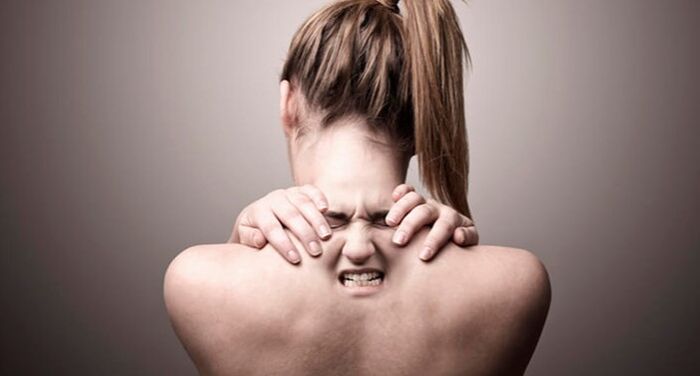
- The first phase of osteochondrosis. The amount of moisture on the disk break, it is dehydrated. The destruction is not yet happening, but after the heavy dehydration of the core on the fibrous ring, microcraks are beginning. The symptoms at this stage of the disease are usually absent.
- Second phase of osteochondrose. The disk height begins to decline, which means gradually fastening the symptoms and advancement of pathology. In the spine, the distance decreases between its individual segments, which is why the ligaments contain. At this stage, in a large number of patients, the disease causes the skating of the vertebrae - spondylolistz. Pain, discomfort occurs with deterioration, pain pain can be present even in remission.
- The third phase. The osteochondrosis of the spine at this stage gives heavy pain syndrome, because complications begin to form. Most often, this disk protrusion is less often - arthrosis (degeneration) vertebrate, subluxation of vertebrae. The pain is complemented by the restriction of the mobility of the affected segment of the spine.
- Fourth stage of osteochondrose. The spinal pillar starts to adjust to the new conditions of existence, trying to fix vertebrates to protect against the final destruction. For this osteophytes grow. Pain can be sharp due to injury to nerve endings.
Symptoms of osteochondrose
The first signs of osteochondrose usually start at the initial phase when there is no pain yet. In the neck, lower back, less often - in the thoracic area you can hear the mirror (this means a disk power violation, its dehydration). Furthermore, during overload, work in an unpleasant position, a person can notice the rigidity of the back of the back or neck. They become a "stone" on one or two sides, which is embarrassing, causing ignition, irritation.
Subsequently, the symptoms of osteochondrose become more obvious. At rest, a person can feel normal, but work, weight lifting, a dream of an uncomfortable pillow can cause such phenomena:
- Painful pain;
- Pain;
- Hand stiffness (with neck damage);
- A feeling of stiffness;
- Forced movement reduction;
- Muscle spasm;
- Feasts;
- Increased pressure;
- Breach of holding.
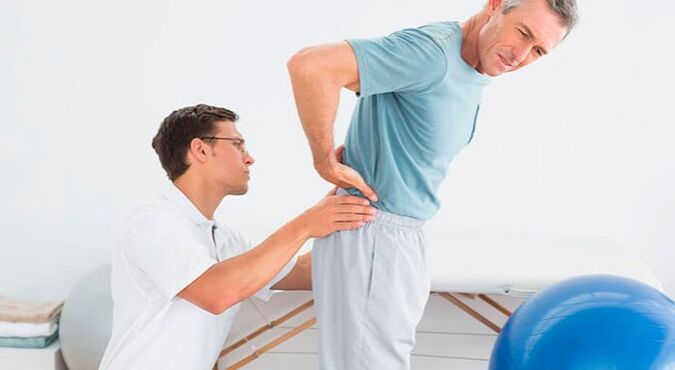
When overloading the patient's spine, osteochondrosis gives more pronounced signs and symptoms. The pain occurs in the shoulders, gives him his hands, elbows, headaches appear. With osteochondrose of cervix, the noise in the ears, dizziness, is developed by the vertebrate artery syndrome, and the vision is disturbed. Over time, no muscle atrophy has occurred without osteochondrose treatment, the skin becomes pale. The course of heart pathology can worsen, the work of the liver, gallbladder and gastrointestinal tract.
What is the pathology that leads to?
The consequences of this disease are always uncomfortable, they provoke an increase in pain. With osteochondrose, there are:
- Disk protuberance;
- Prolapse and hernia disk;
- Bouts of Radiculitis, Ishias, Lumbago;
- Kiphose, Scoliosis.
The danger to a person largely depends on the type of hernia for osteochondrose of the spine. They are the front, rear, strangers and the most dangerous are rear hernies - they can squeeze the spinal power. In the lumbar segment of the spine, the hernia are most often, mostly between 4-5 vertebral.
Lumbar osteochondrose can cause very unpleasant symptoms - shelters (lumbago). Bol lumbago burns, sharply, unbearable, very hard to endure. The cause is the nerve attached, because the patient is damaged by a neuromusive bundle. Especially dangerous to osteochondrose of the tailcades of the tail of the tail, when a person has a pinch of a large beam of spinal nerves. As a result, the functions of the hoses, bladder, can even paralyze the leg.
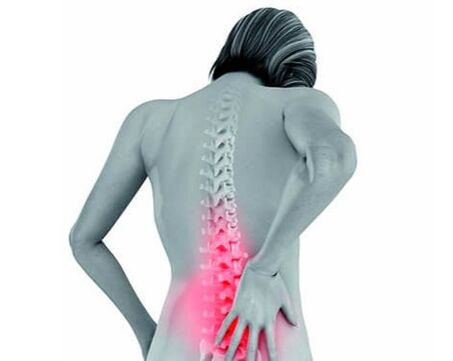
The signs of osteochondrosis often descend into severe muscle atrophy. If muscles do not participate in the body for a long time, the spine movements are limited, then individual fiber rely. As a result, the patient can become a disabled person tied to bed. Cervical osteochondrosis is also very dangerous, because the hernia in this segment can cause blood to the blood in the brain. At this stage, there is a risk of damage to vision, swallowing, speech and other brains functions.
Diagnosis of the disease
Independently recognizing the signs of osteochondrose, you have to think about his treatment. Since the spine lesion can reach different stages, osteochondrose treatment will also be unequal. It is important to make a correct diagnosis so that the therapy is properly selected.
Due to the prevalent prevalence of disease and the presence of characteristic symptoms, the doctor will be able to take the diagnosis on a preliminary review. But for the differentiation of osteochondrosis from other diseases of the back and internal organs, the following diagnosis is made:
- X -aj spine. It will help identify disk height, the degree of their thinning, as well as the presence of osteophytes.
- CT, MRI. More preferably in the examination. With this disease, the severity of nerve damage, soft tissue and finding the smallest protrusions will allow.
With osteochondrose, laboratory tests do not play the most important role, but is the delivery of general analysis, biochemistry to exclude inflammatory processes, rheumatoid lesions of bones, joints. To study muscle function, the doctor carries out a number of physical tests and clarify the work of blood vessels and nerves, they form duplex, electromic.
Treatment of osteochondrosis medications
If the symptoms and treatment of osteochondrose, it is not worth postponing therapy - the disease progresses quickly. At an early stage, gymnastics is usually recommended, muscle strengthening massage - this will be enough. At the remaining stages of osteochondrosis, treatment is needed, and sometimes surgery.
Restration of pain is the most uncomfortable sign of the disease - you can use non-steroidal anti-inflammatory medications. They cannot cure osteochondrose, but they are always prescribed before therapy exercise to mitigate symptoms. In severe cases, drugs are applied in injections, but they are more often recommended for 7-14 days in tablets and locally, in the form of fat.
If a person has a strong painful syndrome in the spine, it is injected with glucocorticosteroid injection directly to the damage zone.
Osteochondrose treatment is also done using the following funds:
- B Vitamins B. Help improve the nervous conductivity of the spine.
- Chondroprotectors. They do not trust the intervertebral cartridge, strengthening discs.
- Musorelaxans. Reduce the power of muscle spasms for osteochondrose.
- Vascular medications. Optimize blood circulation in spine.
If osteochondrosis is developing, then only Chondroprotectors give anesthesia and pathogenate treatment, they are taken in courses for 3-6 months. The rest of the drugs bear the symptomatic effect and does not affect the course of osteochondrose.
Physiotherapy and osteochondrosis
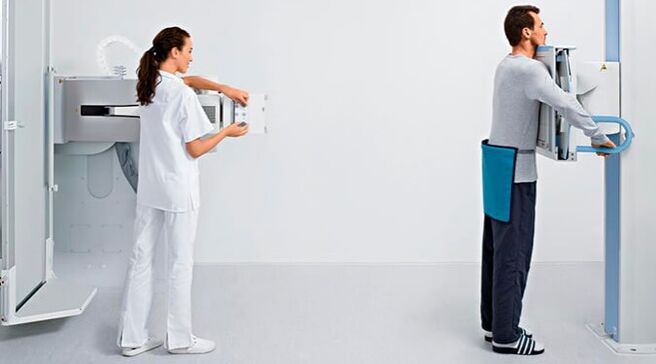
In the list of measures than to treat osteochondrose, physiotherapy techniques necessarily include. Thanks to physiotherapy, osteochondrose treatment will be more efficient, as the action extends directly to focus inflammation. Physiotherapy will alleviate painful syndrome, eliminate cramps, improve blood microcirculation, help remove snippets from nerves. The most popular methods are as follows:
- Electrophoresis. The treatment of osteochondrosis thus enable the provision of relaxing, antimonytic substances and anesthetics directly into the zone of vertebrae, muscle, ligaments.
- Ultrasound. Relieves unpleasant symptoms, anesthesia, creates the effect of vibration massage, activates metabolism at the local level.
- Magnetotherapy. Varias or permanent magnetic fields eliminate the inflammatory process.
All types of physiotherapy should be carried out by courses of 10-15 proceedings, while individual contrainhincincians are necessarily taken into account.
Gymnastics and massage
Exercise therapy in the treatment of osteochondrose plays a dominant role. Without therapy exercise, it will not be possible to form a strong muscular cord, and the latter is acutely needed to maintain a sick spine. Also, gymnastics increases blood circulation in vertebrate gardens, improves metabolic processes and helps quickly remove product deterioration.
How to cure osteochondrose with gymnastics? The complex is selected only individually, and only on 1-2 phases can be reported without doctor's control. In later stages, unnecessary, stronger movements can cause DISP DISERAVs and strengthen the problem. In 3 stages, all exercises are made only in a fake position.
Massage is required for osteochondrose treatment. In the acute phase they do not - that will cause excitement. But properly performed massage in a chronic stage with osteochondrose is necessary. After the flow of sessions, the muscles relax, the clamps were removed, nerves and blood vessels begin to function normally. Massage is done only in gentle mode, without sudden movements.

Pathology prevention
In order to prevent the operation on osteochondrose, it is important to carefully consider prevention measures:
- Do not allow hypodynamia. This disease can advance with power loads, but swimming, skis, filling will only benefit and help strengthen muscles and health as a whole.
- Follow the posture. At work and at home, it is important to sit properly, not in childhood and childhood.
- Sleep on comfortable pillows. There are preventative cushions, with existing osteochondrose, several more, used therapeutic.
- Do not lift weights. If necessary, you should sit, get up with the object, holding your back straight.
- They regularly work muscle strengthening classes. This is important for neck muscles, back, press, bottom back.
- Wear comfortable shoes. Orthopedic shoes will not allow the risk factor to defeat vertebrae.
It is also important to eat well, not smoking, enrich the diet with vitamins, consume more fluids - so that the probability pathology will reduce.






















